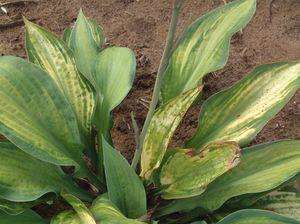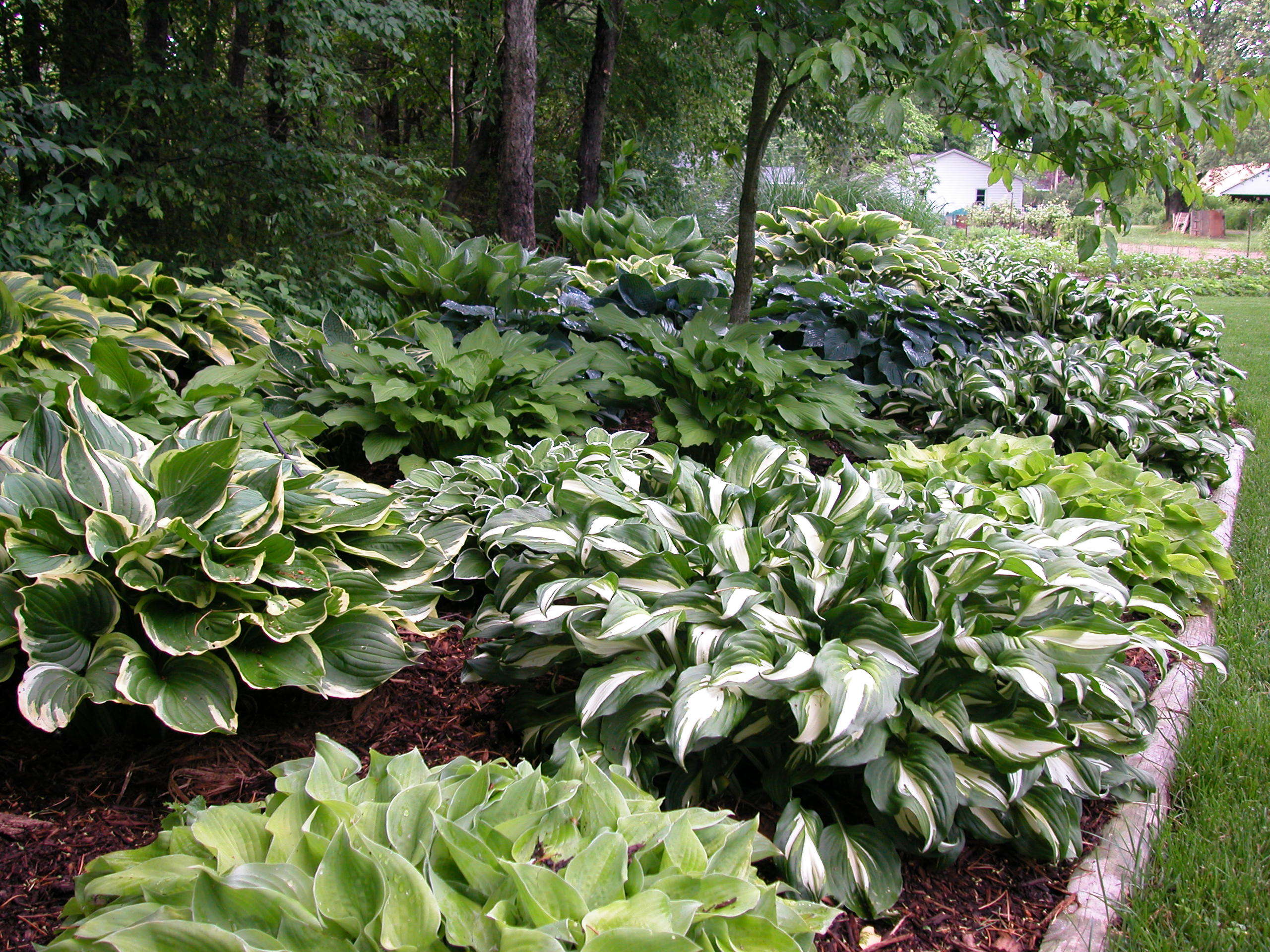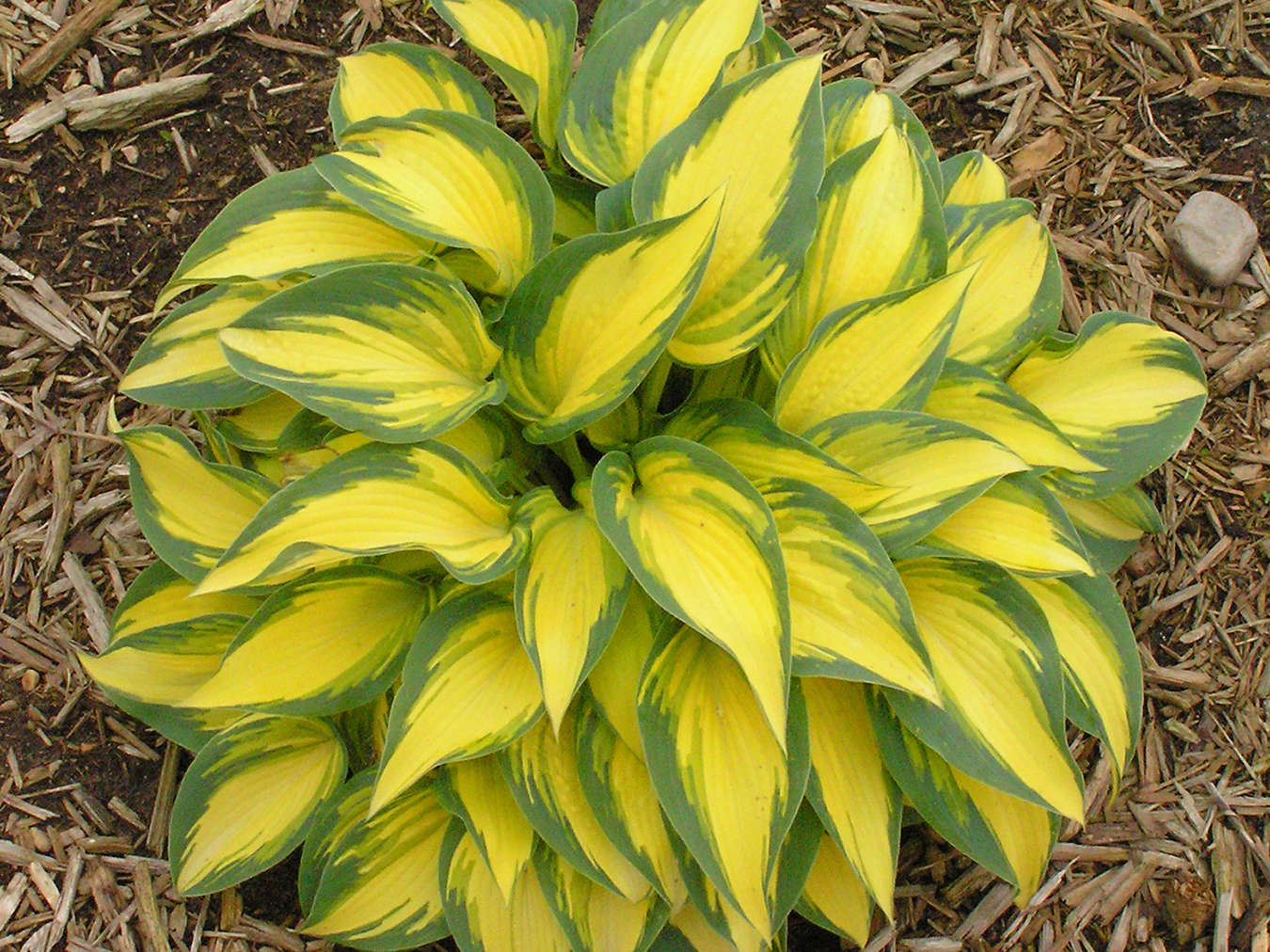Maintaining Your Hostas
Hosta Grower's Guide
Hostas are very low maintenance perennials that require little action on your part to thrive. Since you have prepared your soil well when you first planted them, you've already done most of the work. If sited correctly and given adequate moisture, most hostas can grow undisturbed in the landscape for many years without requiring any maintenance. That said, most gardeners really like to "play" in their garden! Here are a few things you can do for your hostas.
Mulching
Apply a layer of mulch to your hostas and your shade garden in spring and fall if it is getting thin. Choose a mulch that will decompose and add humus to the soil and therefore nutrients for your plants. Examples include: compost, peat, shredded bark, pine needles, or shredded leaves.
Fertilizing
Whether you are growing your hostas in the ground or in containers, fertilize them in spring and early summer with organic components such as manure, compost, or leaf mold, or with a synthetic fertilizer. Do not fertilize your hostas after midsummer as this will promote the production of soft growth that is highly attractive to slugs and snails.
Dividing
It is not usually necessary to divide your hostas for many years after they are planted. However, you may wish to divide them in order to have more plants to spread around the garden or to share with your gardening friends. Or maybe they have simply outgrown their allotted space or need to be rejuvenated. A sure sign that it's time to divide your hosta is if, in early spring, the new pips that are coming up surround the old, dead, woody crown in a ring. To learn how to divide perennials, read about caring for your garden.
Damage Control
Sometimes, it's necessary to perform a bit of damage control on your hostas. For example, when an unexpected hail storm comes your way in early summer when your hostas are in their prime, you might need to trim off some tattered leaves. If you live in a region where sudden late frosts are common, be aware that they can cause damage to the foliage. Repeated frost damage over successive years can lead to reduced plant size and vigor. Some hosta varieties that emerge early and are particularly prone to frost damage include H. montana 'Aureomarginata', H. lancifolia, and H. plantaginea and its hybrids. If you live in a late frost prone area, you may want to choose other varieties for your landscape. If you do plant them, site them where they will be protected and out of the wind.
Fall Cleanup
Before adding another layer of mulch to your shade garden in late fall, cut back and clean up all of the hosta foliage that remains and remove it from the garden. It is important to do this in the fall because damaging pests such as slugs and snails may lay their eggs in the decaying foliage and you want to get this out of the garden before they hatch in spring. A good fall cleanup will go a long way to preventing future problems with these pests.
Hostas are very low maintenance perennials that require little action on your part to thrive. Since you have prepared your soil well when you first planted them, you've already done most of the work. If sited correctly and given adequate moisture, most hostas can grow undisturbed in the landscape for many years without requiring any maintenance. That said, most gardeners really like to "play" in their garden! Here are a few things you can do for your hostas.
Mulching
Apply a layer of mulch to your hostas and your shade garden in spring and fall if it is getting thin. Choose a mulch that will decompose and add humus to the soil and therefore nutrients for your plants. Examples include: compost, peat, shredded bark, pine needles, or shredded leaves.
Fertilizing
Whether you are growing your hostas in the ground or in containers, fertilize them in spring and early summer with organic components such as manure, compost, or leaf mold, or with a synthetic fertilizer. Do not fertilize your hostas after midsummer as this will promote the production of soft growth that is highly attractive to slugs and snails.
Dividing
It is not usually necessary to divide your hostas for many years after they are planted. However, you may wish to divide them in order to have more plants to spread around the garden or to share with your gardening friends. Or maybe they have simply outgrown their allotted space or need to be rejuvenated. A sure sign that it's time to divide your hosta is if, in early spring, the new pips that are coming up surround the old, dead, woody crown in a ring. To learn how to divide perennials, read about caring for your garden.
Damage Control
Sometimes, it's necessary to perform a bit of damage control on your hostas. For example, when an unexpected hail storm comes your way in early summer when your hostas are in their prime, you might need to trim off some tattered leaves. If you live in a region where sudden late frosts are common, be aware that they can cause damage to the foliage. Repeated frost damage over successive years can lead to reduced plant size and vigor. Some hosta varieties that emerge early and are particularly prone to frost damage include H. montana 'Aureomarginata', H. lancifolia, and H. plantaginea and its hybrids. If you live in a late frost prone area, you may want to choose other varieties for your landscape. If you do plant them, site them where they will be protected and out of the wind.
Fall Cleanup
Before adding another layer of mulch to your shade garden in late fall, cut back and clean up all of the hosta foliage that remains and remove it from the garden. It is important to do this in the fall because damaging pests such as slugs and snails may lay their eggs in the decaying foliage and you want to get this out of the garden before they hatch in spring. A good fall cleanup will go a long way to preventing future problems with these pests.


